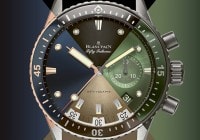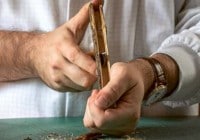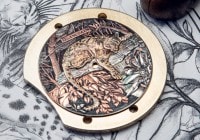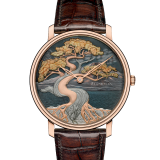
Search in Issues
Chapters
List of parts
Chapter 7
The clouded LEOPARD
An artistic journey in Southeast Asia.
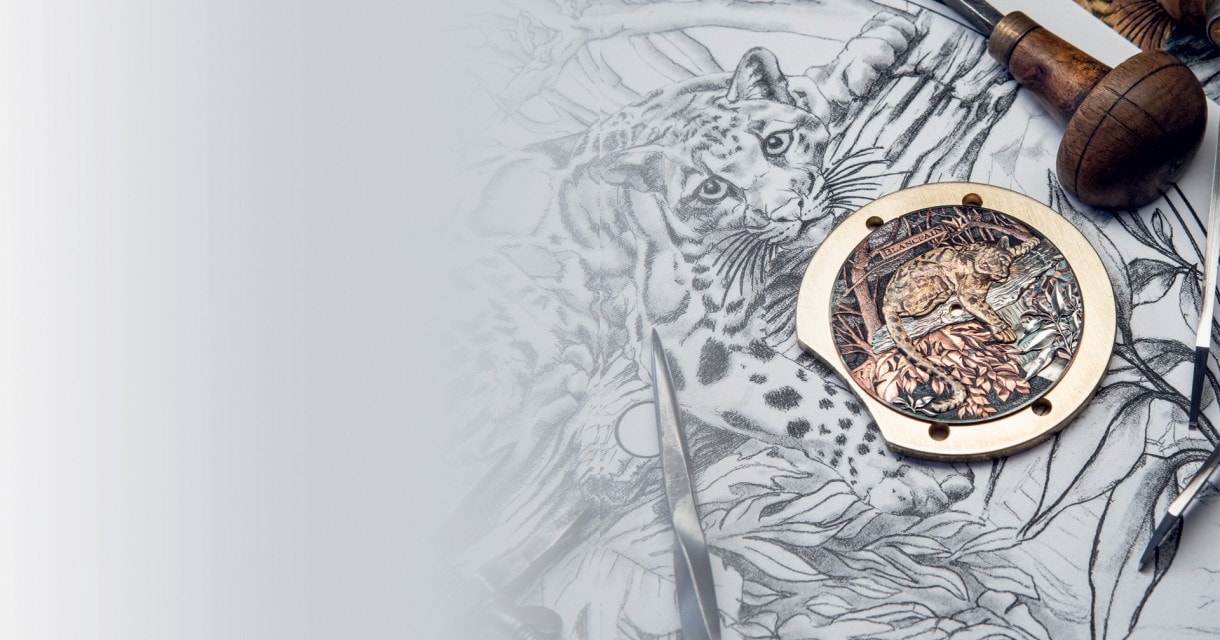
THE ASIAN CONTINENT HAS OFTEN INSPIRED BLANCPAIN'S ARTISANS, both in terms of the techniques used and the themes represented.
The Asian continent has often inspired Blancpain’s artisans working in their Métiers d’Art workshops, both in terms of the techniques used and the themes represented. Through its most recent artistic subject, Blancpain invites us to discover a new facet of Asia: that of untamed nature, and more specifically of a marvel of the animal kingdom, the clouded leopard. Given the difficulty of reproducing a figure within the modest dimensions of a watch dial, creating a Métiers d’Art model is a feat in itself. Despite this, Blancpain has gone one step further by offering two interpretations of this unique animal. You might be tempted to say that approaching a subject from different angles is commonplace: famous artists have done it, including Monet who made numerous paintings of his garden at Giverny. Blancpain, on the other hand, now adds an extra dimension to its work. Its two interpretations of the Asian feline vary not only in terms of pose, but also with regard to the medium and materials. Both models are crafted using different skills emblematic of Blancpain’s artistic crafts: the art of porcelain combined with miniature enamel painting, and shakudō combined with engraving and damascening. This diversity embellishes these two variations, united around a common theme.
Found in Southeast Asia and the Himalayas, the clouded leopard owes its name to the large, irregular, dark patches on its coat, enabling it to be easily camouflaged in the heart of tropical forests. Nicknamed the “tree tiger” by the local population because of its exceptional agility, this feline is an important symbol in many Asian cultures. Coveted by some for the value of its fur, perceived as an attribute of power and social status; and venerated by others for its qualities as an animal with a role as a psychopomp (spiritual guide of the soul), the clouded leopard elicits strong reactions. Although protected from hunting by the legislation of most of the countries where it lives and listed as an endangered species, it is now threatened by poaching and deforestation. To depict the importance of this rare and discreet animal, Blancpain called upon its expertise in hand decoration. Like the clouded leopard itself, the artistic techniques used by Blancpain are rare in watchmaking. Some, such as miniature enamel painting, are offered by only a handful of maisons around the world. Others, such as shakudō, have been exclusively introduced to watchmaking by Blancpain, which remains the one and only Maison to perform them. Five skills fully integrated within the Métiers d’Art workshops in Le Brassus – a hub of watchmaking-related crafts – were chosen to interpret the theme of the clouded leopard on the dial: the art of porcelain, miniature enamel painting, shakudō, engraving and damascening. The two one-of-a-kind models resulting from the talent of Blancpain’s craftsmen offer two depictions of the clouded leopard in its forest habitat.
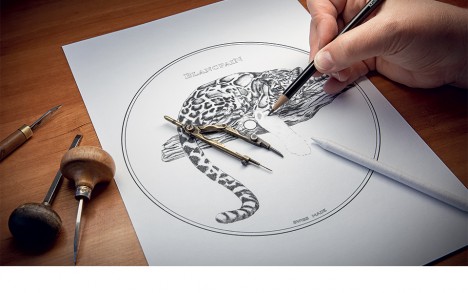
Tracing a sketch on paper of the motifs to be engraved.
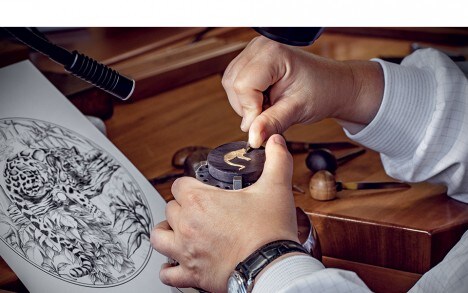
Engraving the gold applique depicting the clouded leopard.
The clouded leopard in enamel-painted porcelain is framed by a 33 mm white gold case with a diamond-set bezel. The accompanying movement is the selfwinding, in-house 1154 calibre, whose meticulous finishing can be admired through the back of the timepiece. The engraved and damascened shakudō model comes in a 45 mm red gold case. This broad diameter traditionally favoured for highly ornate pieces also features a sapphire crystal caseback revealing the 15B hand-winding movement adorned with a Côtes de Genève motif.
The clouded leopard expressed through the art of porcelain combined with miniature enamel painting
Miniature enamel painting is one of the many enamelling methods performed by Blancpain artisans. The usual medium for this work in watchmaking is an enamel dial, but in this case Blancpain has opted for porcelain. The Maison adopted this manual skill of Chinese origin in 2019, after more than a year of development and testing. All its porcelain dials are thus designed and crafted within its walls. The use of this ceramic represents an original approach to miniature painting. Compared to enamel, porcelain is very fine and has a translucent appearance. It also offers the advantage of being able to accommodate paints that can be fired at over 1000 °C. Reaching such temperatures enables the colour to penetrate the material and the models to take on a particularly smooth and shiny appearance. The paints used for enamel, limited to firings at 800°C, tend to remain on the surface, creating relief effects on the dial. Although these paints feature brighter colours than those that can be fired at 1000°C, they have the advantage of greater depth. The process of creating an enamel painting on a dial is particularly complex. It begins with the preparation of the surface to be painted. Blancpain’s porcelain dials are created in several stages punctuated by lengthy drying and firing phases. The porcelain – presented in powder form mainly composed of quartz, feldspar and kaolin – is first mixed with water. The resulting paste is sieved and filtered to remove residues and impurities, prior to being poured into dial-shaped moulds. After demoulding, the dials are dried for 24 hours before being fired for 24 hours at 1000°C. This first passage through the kiln both hardens and prepares them for enamelling. Applied by hand to each timepiece, the enamel requires a second 24-hour firing at a temperature of 1300°C, which vitrifies the porcelain and prepares it to receive the colour.
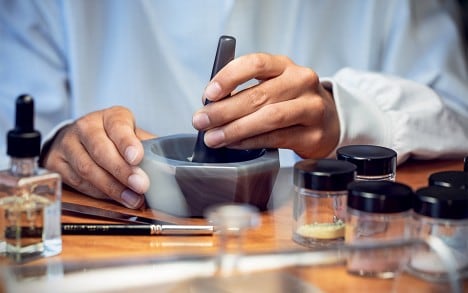
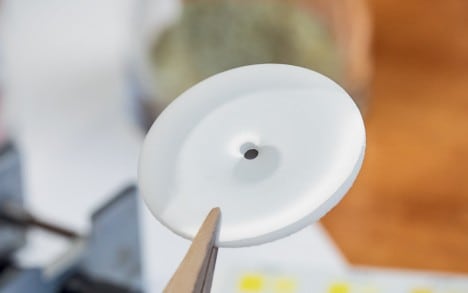
The usual medium for this work in watchmaking is an enamel dial, but in this case Blancpain has opted for porcelain.
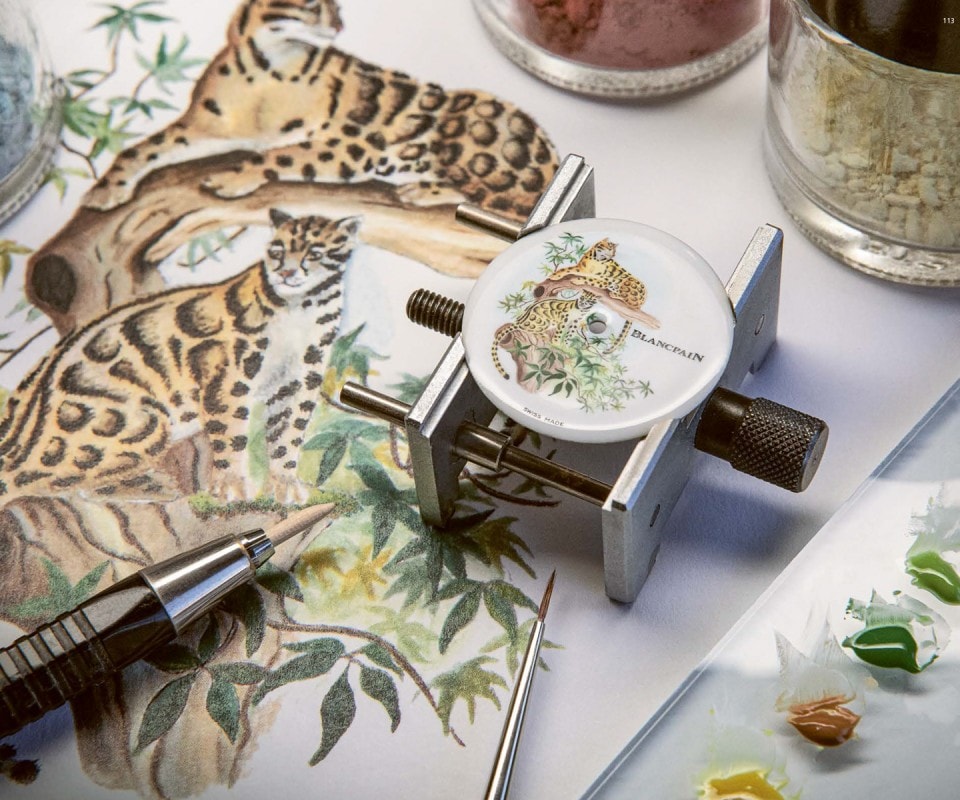
Before a brush touches the surface of the dial, THE DESIRED ENAMEL SCENE IS EXTENSIVELY SKETCHED to assess how it will be brought to life.
Before a brush touches the surface of the dial, the desired enamel scene is extensively sketched to assess how it will be brought to life. Blancpain’s artisans seek the perfect balance, not only in the main subject, but also in the way it is combined with the other elements of the dial. The design is first meticulously drawn in pencil – a process that can be particularly timeconsuming – and then gouache painted to create something resembling a painted porcelain dial on paper. Throughout these preliminary stages, it is imperative to keep in mind that the scale on paper is much larger than that of the dial. This concept enables the artists to ensure that the contrasts and level of detail will be legible on the timepiece itself. Once the configuration is determined and the colours are selected, it is time to actually make them. Crushed to a powder with an agate mortar, the enamels are mixed with pine oil in a process requiring a lot of elbow grease. The enamellers create their own palette by mixing colours to obtain the shades they need. Some hues are based on specific recipes developed by Blancpain. When the colours are ready, the painting can begin. Trunks and foliage are patiently painted by hand in great detail. The same is true of the majestic feline. Although the artists work with binocular magnifying glasses, they must regularly examine their piece in daylight with the naked eye in order to evaluate the result. Given the small size of a watch dial, extremely fine brushes are required. Those used by Blancpain artisans are made of sable hair and some details are so tiny that they may prefer to use a needle.
Once the painting is finished, it must be fired in the kiln at a temperature of 1200°C. This final stage, which gives the work its brilliance and enduring stability, constitutes a significant challenge for the enamellers. Firstly, because the colours are susceptible to alteration during the firing process, so all the shades must therefore be tested beforehand to ensure that the finished dial corresponds to the previously defined project. Secondly, because unfortunate events can occur once the piece has been fired, such as the formation of bubbles or the appearance of flaws. In such circumstances, the enamellers are forced to start their work again. The task is laborious and involves an element of the unknown, but the effort is worth it. Each dial is unique, and every owner of a Blancpain painted porcelain watch can be sure that he or she has a piece of work that will never be seen on any other wrist.
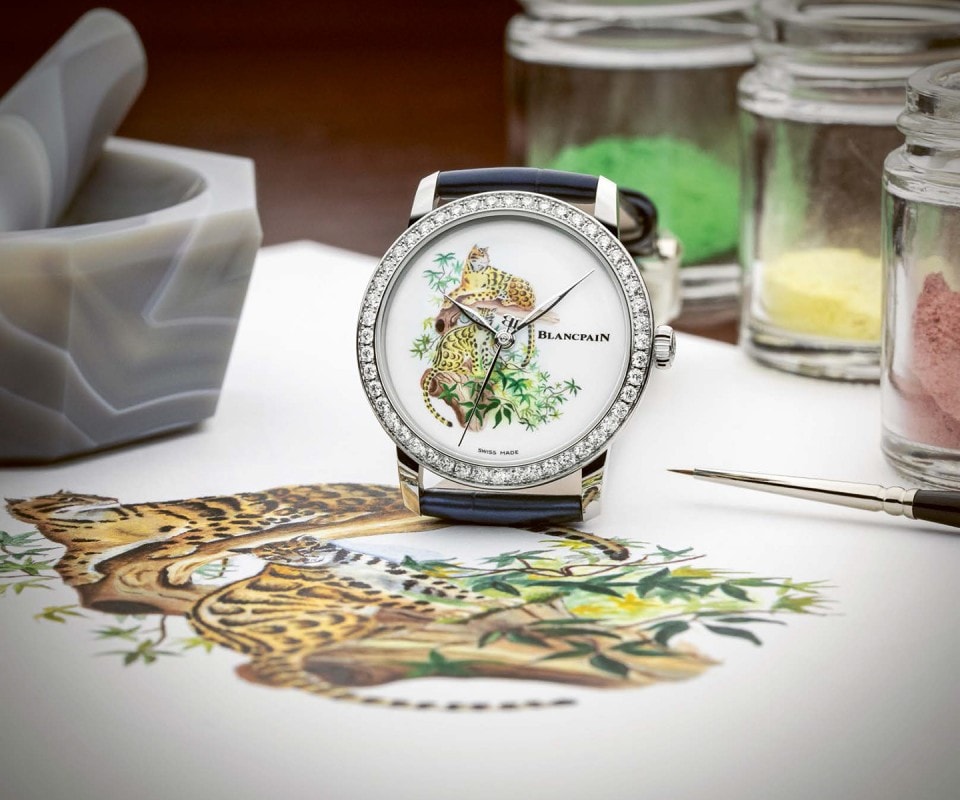
The clouded leopard in enamel-painted porcelain is framed by a 33 mm white gold case with a diamond-set bezel.
By combining shakudō with rose, yellow or white gold appliques, Blancpain’s craftsmen TRULY BRING COLOUR to their pieces.
The clouded leopard according to the art of shakudō associated with engraving and damascening
Shakudō is an age-old Japanese art appreciated by great goldsmiths who used it in particular to embellish the guards (tsuba in Japanese) of samurai swords. The process consists of modifying the natural yelloworange hue of a gold and copper alloy to obtain a dark grey-blue colour characterised by subtle nuances. Blancpain craftsmen use it to create unique watch dials, such as the one depicting the clouded leopard. Like porcelain, shakudō was favoured by the Maison because of the interest of this craft and its inherent aesthetic possibilities.
In its simplest form, the alloy used by Blancpain to make a dial is soaked in a bath of copper acetate (verdigris), called rokushō, until the desired colour is achieved. This ancient expertise relies on a great deal of trial and error, as it is impossible to determine in advance the shade achieved after each bath. Many times, the disc must be removed from the solution, rinsed and meticulously examined before being put back in. When the artists have reached the exact desired colour, the shakudō process is complete. Blancpain combines this art with complementary ornamental processes such as engraving and damascening. Engravers typically work on a plain metal base, such as yellow gold. Contrasts are achieved by removing material using techniques such as polishing, frosting, sandblasting and chasing. By combining shakudō with rose, yellow or white gold appliques, Blancpain’s craftsmen truly bring colour to their pieces. Patinas at various stages of the work enrich their compositions with shadows and reflections that add intensity, texture and complexity.
Like all Métiers d’Art watches created by Blancpain, each shakudō dial is a special one-off creation. This uniqueness is not limited to mere variations in colour or engraving, as each design represents an exclusive watch. The clouded leopard dial is an excellent exam - ple. The work on such a model begins with drawing a sketch on paper, including the ornamental motifs intended to appear in the background. The depiction of the leopard, along with other foreground elements, corresponds to a gold applique that is hand-engraved using extremely precise tools. The appliques are also subjected to various chemical baths to achieve the desired colour effects, such as the strikingly realistic cloud-like spots on the feline’s coat. They are secured to the surface of the dial by very fine pins inserted in holes previously drilled in the dial. The back of the pins is then hammered to ensure that the appliques are firmly held in place. Historically, many shakudō objects also featured decorations made using the damascening technique.
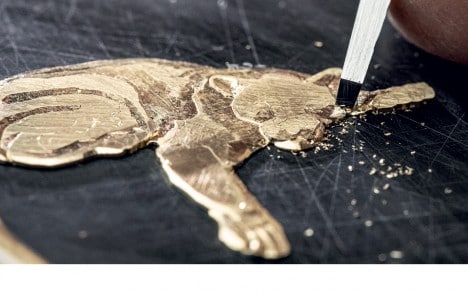
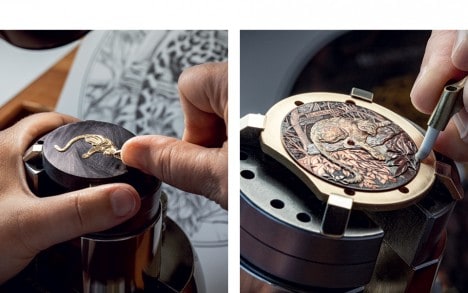
The depiction of the leopard, along with other foreground elements, corresponds to a gold applique that is hand-engraved before being affixed to the dial.
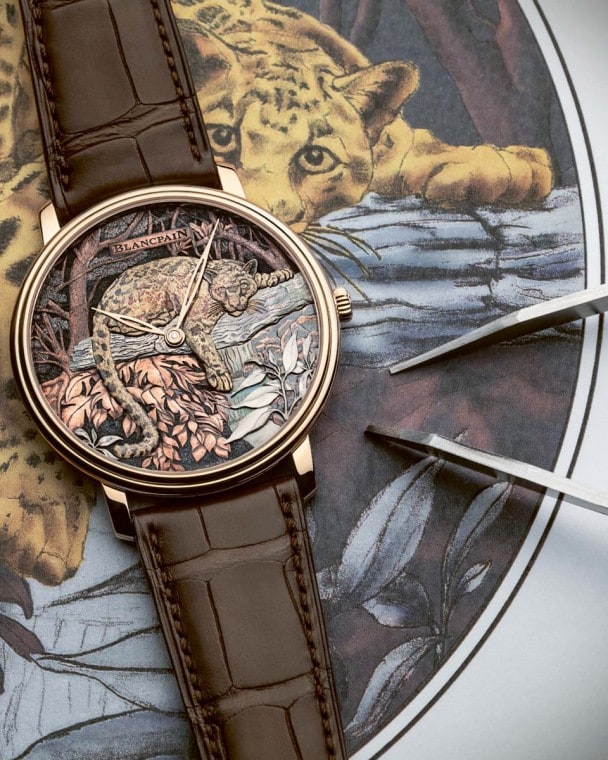
To craft the leopard’s whiskers, Blancpain placed THE GOLD THREADS MEASURING 0.2 mm THICK one by one into previously engraved grooves created using the art of damascening
This ancient art involves engraving patterns on a surface to form a trough, which is filled by inlaying soft metal threads hammered into the hollowed space. The damascening technique enables engravers to scatter colourful accents – yellow and grey using gold and silver filaments respectively – and to bring out small details on the appliques. This technique is also used to create friezes on shakudō discs. Depending on the size of the thread inserted into the engraved grooves, colourful lines can be achieved on the patinated background that are sometimes flush with the base, and sometimes raised to create additional depth effects. In accordance with tradition, no glue is used; hammering is sufficient to hold the precious metal ornamentation in place in the carved surface, which is then delicately polished. This is how the leopard’s whiskers were crafted. Blancpain used 0.2 mm thick gold thread, which had to be thinned by half to match the width of the engraved whiskers. The threads were then placed one by one, using tweezers, in the cavities, and delicately flattened with a chisel and a small hammer so that they perfectly fit the interior shape of the grooves and could not come out. To add to the complexity, the whiskers had to be placed astride two different appliques, those respectively representing the panther and the branch on which it is lying. This perilous exercise involved a delicate balancing act, implying ensuring that the threads were not crushed too finely so as to preserve a pleasing volume and thus endow this composition with an additional dimension. All in all, the 16 whiskers of the clouded leopard took a whole day of work.
Blancpain’s creations combining shakudō, engraving and damascening testify to the exceptional talent of its artisans, and to its unique stature in the watchmaking world, as it is the only Maison to offer this combination of artistic crafts.



